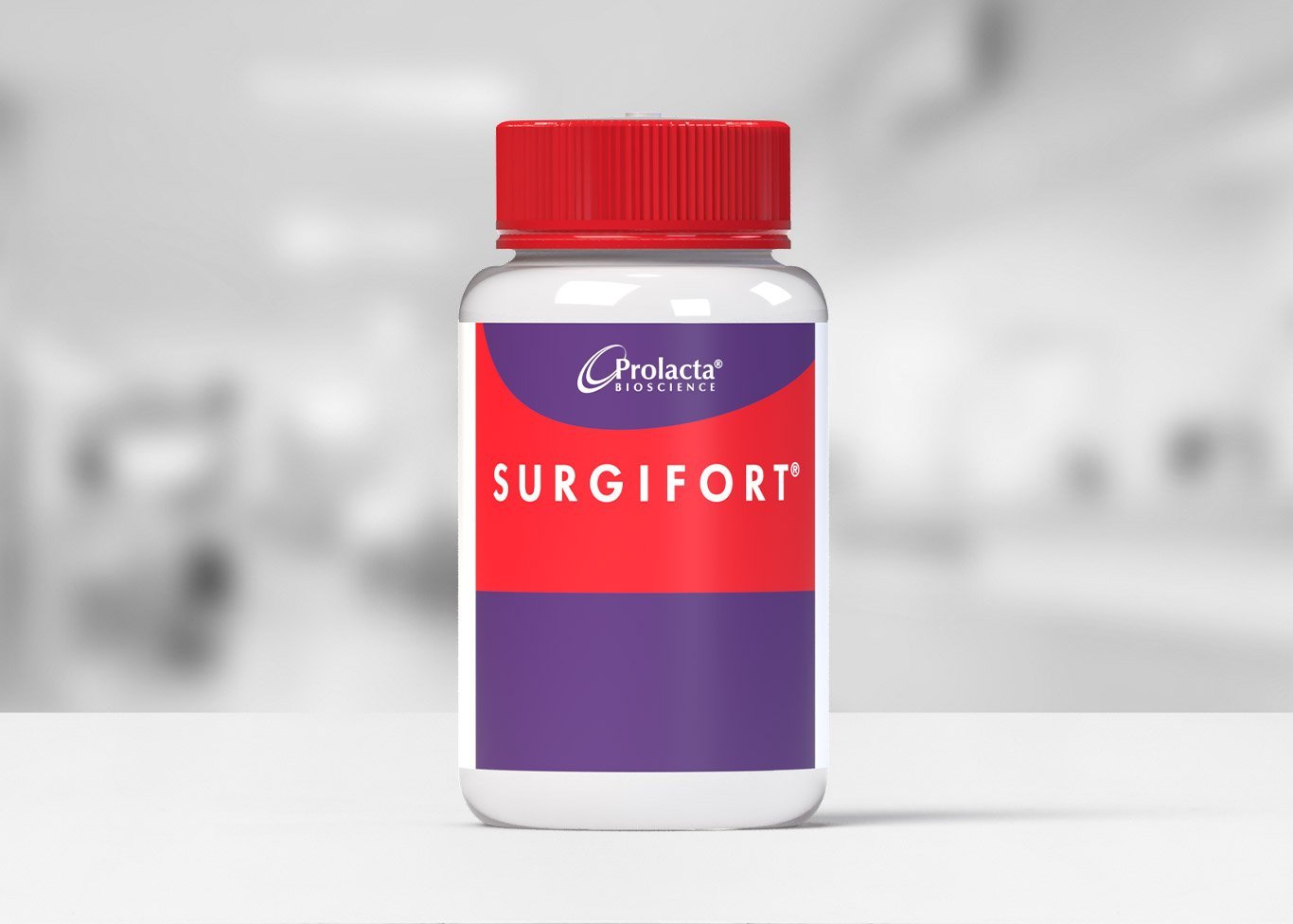Term nutrition product
Meeting the nutritional needs of infants with gastroschisis
As a human milk-based, human milk fortifier, Surgifort® is designed to meet the nutritional needs of full-term infants undergoing surgery for gastroschisis. An Exclusive Human Milk Diet (EHMD) is achieved when 100% of protein, fat and carbohydrate are derived from human milk. This diet includes human milk plus a human milk-based fortifier.

Research, recovery, results
When recovering from surgery, these term babies need human milk and may need human-milk based fortifiers for additional nutrition to help recover from surgery.
In a case series of term infants recovering from gastroschisis repair, those who received Surgifort showed (or demonstrated):
Surgifort fortifier
When used as part of an EHMD†, and added to mother’s own milk or to donor human milk, Surgifort fortifier provides an appropriate amount of calories, protein and minerals* required for infants to grow and heal. Even when fluids are restricted, Surgifort fortifier is concentrated to ensure that nutritional needs can be met.
- Nutritionally incomplete, infants may require additional vitamins and iron added separately from the product
- Available frozen in 125 mL product containers containing 100 mL of concentrated product
* Sodium, potassium, chloride, calcium, phosphorus, magnesium, copper and zinc.
Using Surgifort fortifier
Initiation of enteral feedings and advancement rates should be individualised based on each infant’s clinical status, weight and age. Optimally, mother’s own milk (MOM) and/or donor human milk (DM) should provide a minimum of 20 kcal/fl oz. (1 fluid ounce equals 30 ml)2
As Surgifort fortifier is designed to provide variable calories depending on the patient’s needs, when mixed with term human milk and given at an appropriate volume, you can achieve nutrition that is within the recommendations established by the U.S. National Academy of Medicine. 3
Learn more about Surgifort® fortifier:

Mixing instructions

Nutritional information

Supplemental Product Information
What the research shows
Surgifort fortifier extends many of the proven benefits of Prolacta Bioscience® 100% human milk-based nutritional products, originally designed for preterm infants, and now available as a specific formulation for term infants with gastroschisis, requiring corrective surgical procedures.
Term infants requiring surgery encounter challenges with feeding and growth4, such as:
- Achieving desired growth rates
- High metabolic needs/increased nutrient requirements
- Volume restriction
- Feeding intolerance
- NEC rates
While human milk is optimally beneficial nutrition for all infants, those requiring surgery are sometimes volume restricted while having increased nutritional needs. This results in the inability to consume adequate quantities of unfortified human milk to support their growth. A fortifier is needed to deliver the necessary amounts of nutrition to support optimal growth while maintaining preferred osmolality.1
Nutrition needs for patients with congenital GI disorders
Though human milk is widely regarded as optimal nutrition for infants, and further recommended for those under six months of age, it may not allow for adequate intake of caloric or protein standards for critically ill infants requiring surgery. Previously, fortification options for term infants were limited to infant formula or cow milk-based fortifiers designed for preterm infants. However, exposure to cow's milk protein in formula poses an increased risk of necrotising enterocolitis (NEC) in preterm infants, and is similarly concerning for infants with gastroschisis, who face an elevated risk of NEC as high as 5%.5
Prolacta’s dedication to improving outcomes using human milk-based nutrition inspired the research and development of the Surgifort fortifier. Created specifically for critically ill infants, Surgifort fortifier aims to improve the outcomes of these small patient populations. Gastroschisis occurs in 1 out of 2400 births in the United States.6 Surgifort fortifier is the first and only 100% human milk-based fortifier intended for, and approved by, the FDA for term infants with gastroschisis who have undergone a corrective procedure.
